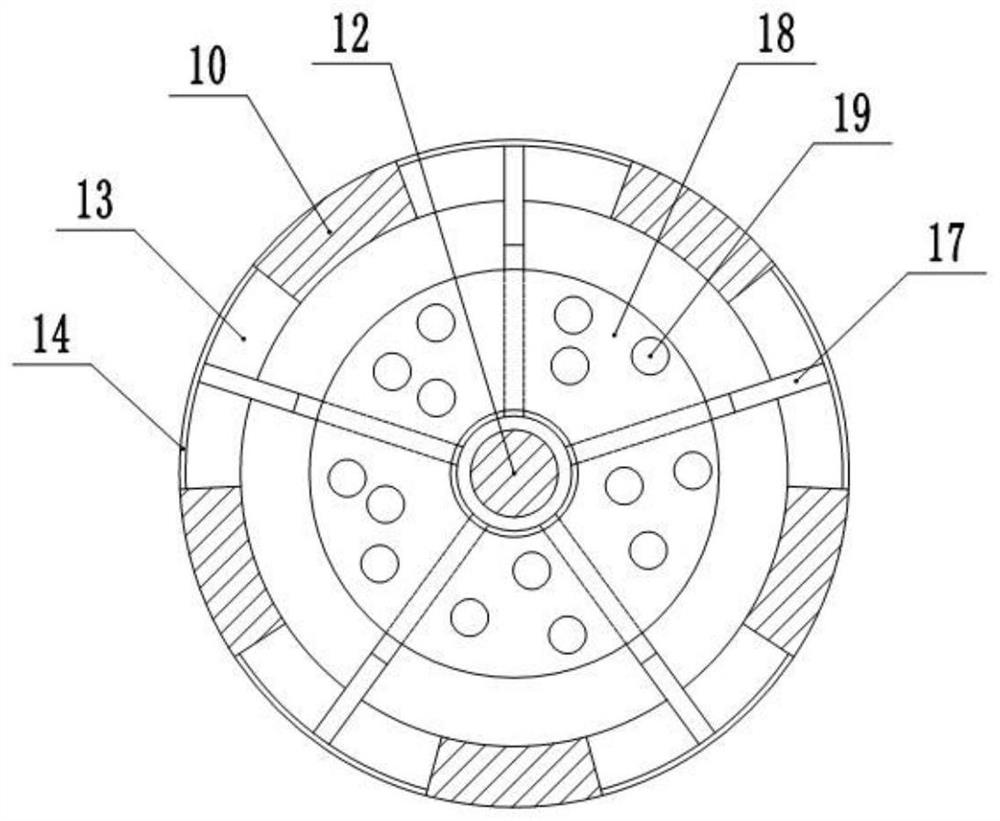High-viscosity rubber asphalt and preparation method thereof
A rubberized asphalt, high-viscosity technology, applied in the field of rubberized asphalt, can solve the problems of high-viscosity rubberized asphalt that cannot be satisfied, application limitations, etc., and achieve the effects of large dynamic viscosity, improved cohesion, and stable asphalt products
- Summary
- Abstract
- Description
- Claims
- Application Information
AI Technical Summary
Problems solved by technology
Method used
Image
Examples
Embodiment 1
[0034] High-viscosity rubber asphalt, including 100 parts of asphalt, 5 parts of rubber powder, 3 parts of SBS, 1.5 parts of oxidized polyethylene wax, 0.1 part of the first crosslinking aid, 3 parts of aromatic oil and 0.3 part of the second crosslinking aid.
[0035] Among them, petroleum asphalt is used for asphalt, 40-120 mesh is used for rubber powder, and the first cross-linking aids are DCP dicumyl peroxide, DTBP di-tert-butyl peroxide, 2,5-dimethyl-2,5 di One of tert-butyl peroxide hexane (double 25); one of the second crosslinking aid sulfur, TMTD, DCP, M or D.
[0036] The preparation method of above-mentioned high-viscosity rubber asphalt comprises the following steps:
[0037] S1: Heating the aromatic oil to 135-160°C, adding SBS and oxidized polyethylene wax in a metered amount, keeping the temperature and stirring for 60-120min, and the stirring speed is 500-800rpm.
[0038] S2: Add the first cross-linking auxiliary agent to S1, heat-preserve and stir for 60-90 ...
Embodiment 2~13 and comparative example 1~3
[0044] The only difference from Example 1 is that the ratio of each component is different, and the specific composition ratio is shown in Table 1 below.
[0045] Table 1 is the composition ratio of Examples 1-13 and Comparative Examples 1-3
[0046] asphalt rubber powder SBS Oxidized polyethylene wax Aromatic oil first crosslinking agent Second Crosslinking Auxiliary Example 1 100 5 3 1.5 3 0.1 0.3 Example 2 100 10 3 1.5 3 0.1 0.3 Example 3 100 15 3 1.5 3 0.1 0.3 Example 4 100 10 2 1.5 3 0.1 0.3 Example 5 100 10 7 1.5 3 0.1 0.3 Example 6 100 10 3 0.5 3 0.1 0.3 Example 7 100 10 3 3 3 0.1 0.3 Example 8 100 10 3 1.5 1 0.1 0.3 Example 9 100 10 3 1.5 4 0.1 0.3 Example 10 100 10 3 1.5 3 0.04 0.3 Example 11 100 10 3 1.5 3 0.4 0.3 Example 12 100 10 3 1.5 3 0.4 0.2 Example 13 100 10 3 1.5 3 0.4 0.6 Compar...
Embodiment 14
[0048] The difference from Example 2 is that a special stirring device is used in the preparation method step S3, combined with figure 1 and figure 2As shown, the special mixing equipment includes a horizontally fixed mixing drum, the left end of the mixing drum is provided with an inlet, and the right end is provided with an outlet. The stirring drum is connected with a stirring shaft 10 in rotation, wherein the stirring shaft 10 is hollow, and the two sides of the stirring shaft 10 Both ends are connected to pipes through rotary joints, and a number of stirring blades 11 are fixed on the stirring shaft 10. The heating medium (gas, water, liquid metal, etc.) flows through the stirring shaft 10 through the pipes, thereby heating the stirring shaft 10 and the stirring blades 11. A driving mechanism for driving the stirring shaft 10 to rotate is also provided.
[0049] A connecting rod 12 is slidably connected in the stirring shaft 10, and the connecting rod 12 is arranged coa...
PUM
| Property | Measurement | Unit |
|---|---|---|
| melting point | aaaaa | aaaaa |
| softening point | aaaaa | aaaaa |
Abstract
Description
Claims
Application Information
 Login to View More
Login to View More - R&D
- Intellectual Property
- Life Sciences
- Materials
- Tech Scout
- Unparalleled Data Quality
- Higher Quality Content
- 60% Fewer Hallucinations
Browse by: Latest US Patents, China's latest patents, Technical Efficacy Thesaurus, Application Domain, Technology Topic, Popular Technical Reports.
© 2025 PatSnap. All rights reserved.Legal|Privacy policy|Modern Slavery Act Transparency Statement|Sitemap|About US| Contact US: help@patsnap.com



